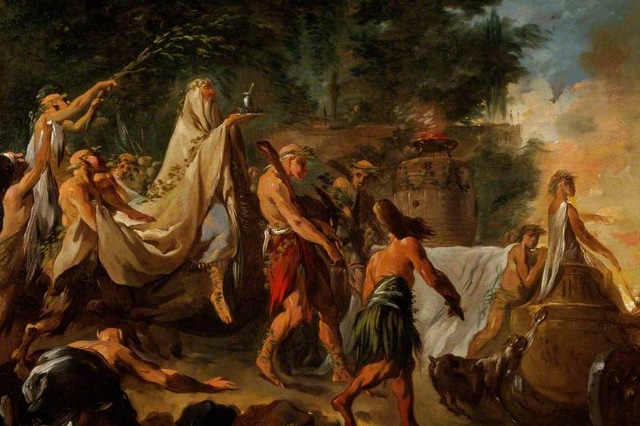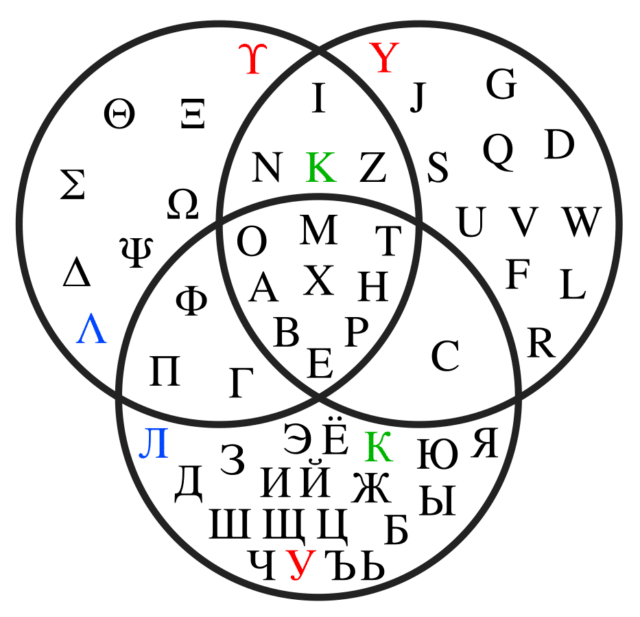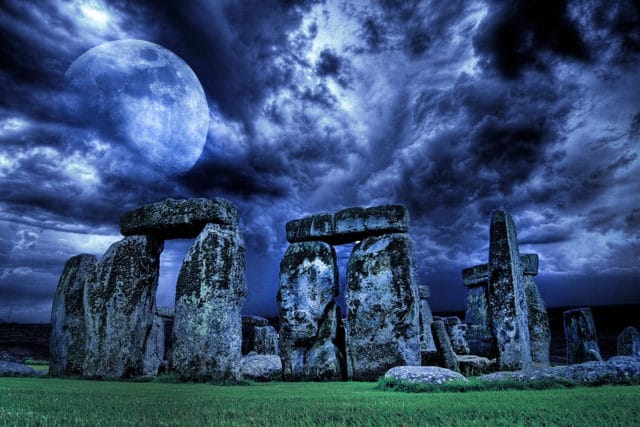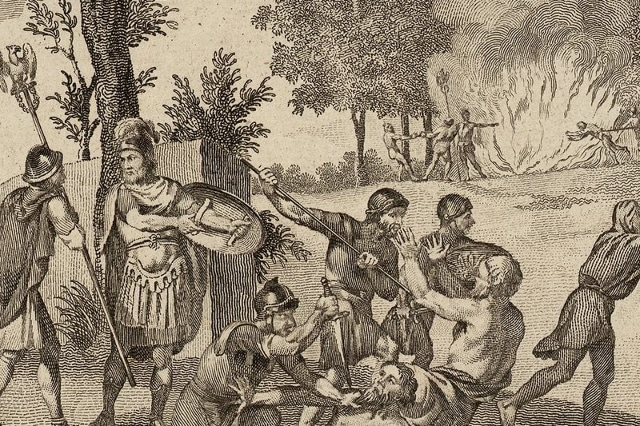Today when your average person is asked to imagine a Druid, their mental picture is probably a sinister hooded figure that belongs in a cult. So what insidious schemes did they carry out for the Celtic peoples settled from Ireland to France? What ghastly rituals did they perform to invoke dark aid or for routine? In fact, how accurate is that black magic mental image in general? Let’s go explore the shadows of history to find out…
10. Mainstream Leadership

As much as we associate Druids with conspiracy and secret rituals, for Celts on both sides of the English Channel they spent centuries as leaders. Not merely tribal chieftains, priests, or anything so simple. They had administrative positions such as astronomers for farming, all offices related to law enforcement including judgeships, and physicians. There were color-coded robes depending on a particular druid’s duties, such as white for the priests and blue for the artisans. The notion of priests enforcing the law especially rubbed their Roman conquerors the wrong way, as they had effectively separated religion and the legal system by 451 BC, centuries before their armies set foot in druid territory.
The reason that Druids had to go underground was because Rome’s emperors had it out for them in particular. Augustus Caesar banned Roman citizens from performing their rituals in 27 BC, and considering that was the year his reign began it seems like it was one of his top priorities. Emperor Tiberius had the senate pass a law banning anyone from carrying them out. Emperor Claudius brought the final hammer down in 54 AD and banned the Druids entirely, effectively driving them out of all public offices. Considering what we’ll see some of those rituals included, it must be said the emperors had a point.
9. Oak Origin

It seems quite possible that the Druids did not call themselves Druids. There’s no written record of the word Druid until 300 AD in the biographical writings of Diogenes Laertius, and he lived roughly a century after the Romans effectively stamped out the Druids as an even semi-organized force. There was also a large gap in recorded use of the word, with the next recorded example being the poet Blathmac’s 750 AD work To Mary and Her Son, and he was only making the claim that Jesus Christ was wiser than any Druid.
It seems that the word Druid was derived from the Irish-Gaelic word “doire,” which means oak tree. Some claim that it’s from the Greek word “driis,” but since that also means oak tree it’s a pretty pedantic point. Their rituals were held in oak groves because the longevity of those trees meant they were associated with wisdom. They also believed that eating acorns could provide them with visions of the future. This reverent perception of oak trees was shared by ancient Slavs and some Native American tribes.
8. Greek Letters

One of the most curious aspects of Druidic society was that reportedly they used the letters of a wholly alien society. According to Julius Caesar’s Gallic Wars, while the druids relied heavily on oral tradition, when they had to write the letters were Greek. The Greek language was supposed to have been brought by a settler named Patholon along with his wife, three sons, and their three wives. However since he also supposedly brought three druids with him whose names literally translated to Cognition, Inquiry, and Knowledge, it seems safe to say he was a purely mythical figure, and the language was actually brought by anonymous settlers.
Caesar claimed that the thinking was similar to the Catholic Church’s before Martin Luther: The language barrier kept the common folk from being able to read it. Additionally druids believed that needing to rely more on oral communication meant additional mental exercise which kept their memories sharper. That’s a bit ironic since the only reason we know that is from a written account by their conquerors.
7. Strict Rituals
Despite having to rely on oral tradition, the rules for a Druid ritual were laid out in clear steps. Always a specific act to mark the beginning (usually a bell ringing or clapping of hands), an act to consecrate the space, identifying the kindred participants, the offerings, thanking the higher power, and then the closing. In the 1980s, a mummified corpse was exhumed from a bog in Cheshire, England known as the Lindow Man whose body showed evidence of having been subjected to ritual preparation despite his well-groomed fingernails and hair, which in 2009 National Geographic reported was evidence the man was a Druidic noble sacrifice.
There was no shortage of occasions for which to hold a ritual, though surely not all included human sacrifices. The Druids had eight regular seasonal holidays known as the Wheel of the Year. Of these the most familiar is their precursor to Christmas and New Year called Yule, which provided the yule log tradition as well as codifying mistletoe as part of the tradition (though Druids believed it was a symbol of life instead of something to kiss under.) Quite different was the Irish tradition of having the people go out and sit on mounds of Earth so that they would be reborn the next day.
6. The Wicker Man?
If there is one piece of trivia that many people know about the Druids solely due to pop culture, it’s that they supposedly would offer living sacrifices to appease higher powers through burning giant humanoid statues as dramatized in 1973 and 2006 horror films, each titled The Wicker Man. Prior to 1973 this wasn’t a particularly well known piece of information. There’s no known archaeological evidence, but there are two compelling pieces of written testimony.
Even though the first movie was set in Summerisle off the UK, Caesar actually claimed that it was a practice in Gaul. He also mentioned that usually the sacrifices would be criminals with the approval of the gods. The other witness was Greek geographer and historian Strabo, a contemporary of Caesar’s who is best known for writing the most thorough history of Augustus Caesar at the time. His claim differed from Caesar’s in that he mentioned that animals would also be included in the sacrificial statues and did not concur about a preference for criminals over other human sacrifices. Accurate or propaganda, it’s understandable that Roman emperors would want that ritual banned.
5. Collaborator Druids

While for the purposes of this list we’ve been portraying all the Celtic peoples with Druids in them as a homogenous group, they were fully capable of turning on each other in the worst ways. For example, during Caesar’s conquest of Gaul, his armies received considerable help from Druids of the Trinovantes people, located where Essex and Suffolk are today. Their primary form of aid was in providing the Romans with geographical information, an invaluable service for an ancient army in unfamiliar territory.
As it happened the Trinovantes had a rather good reason for siding with the Romans over their own kind: Their red-headed tribespeople were often selected to be “volunteers” for the sacrifices. Even though Caesar himself never met with any of the Druids, he gave them what they wanted when he ordered an end to human sacrifices. Or as we’ll see, he gave them what they wanted for the short term.
4. Romance Era Renaissance

The late Eighteenth Century was described by historian Benedict Anderson as the “dawn of the age of nationalism” in Western Europe. In the UK this led to a resurgence of interest in its own history and mythology, including both the stories of King Arthur and Druids. Consequently, thousands of people flocked to groups that styled themselves as the return of druidism. By 1831, there were more than 200,000 members of 193 orders, which was especially impressive considering that in the very early 19th Century the government tamped down on Druid orders out of paranoia born of the French Revolution.
Of these groups, by far the most significant was the Ancient Order of Druids, which was an ironic name for a group that was openly known to have been founded in 1781. Lesser known is the group’s founder, who only went by the name Hurle. This fraternal order is still around today, despite a schism that occurred in 1833 where much of the group left to form a government-registered offshoot called the United Ancient Order of Druids. By far the most celebrated member of the order known today was Winston Churchill.
3. American Druidism
You’d think that since America has little to no cultural heritage related to Druids that it wouldn’t ever catch on in America. Yet when the Ancient Order of Druids opened a lodge in New York City in the 1830s, they were more or less welcomed with open arms. By 1839, there were 17,000 Americans in Druid orders. Not bad for something that was largely imported to the US as a form of protest against established fraternal orders such as the Freemasons.
It was no fleeting fad either: The largest American Druid group, the Ancient Order of Druids in America, was founded in 1912. By 1923, there were 35,000 American Druids. Even in 1963 new large orders such as the Reformed Druids of North America were still being founded and attracting considerable followings. Even these new groups can be shrouded in mystery, sometimes of a farcical nature. For example the Reformed Druids of North America admit on their own website that they don’t know what their sigil means or what it’s significance is, or much of anything about it beyond that it was made in 1964.
2. Modern Druidism

Druidry isn’t about to become the dominant new order, but it’s demonstrated impressive longevity all things considered. In 2001 the American Religious Identification Survey performed a study of 200 million respondents, and there were 33,000 who identified as Druids. A report from 2010 that came out in sync with Druidry being formally recognized as a religion found that there were 10,000 practicing Druids, and found that it was trending upwards in conjunction with environmental consciousness. Of those, the Ancient Order of Druids comprise roughly 3,000 members.
Unsurprisingly the activities of these orders are a bit of a mixed bag. Some of them, such as Reformed Druids of North America and Ancient Order of Druids, have become nonprofit organizations with mission statements regarding promoting mindfulness, community art projects, environmentalism, etc. Others, such as a Welsh order called the Rainbow People, have been very close-mouthed to the media as the fact Druidry is still a fringe religion means they come under a lot of harassment. To date, none of the orders have attempted to revive the practice of human sacrifice. It’s up to the reader to decide whether that’s a disappointment or not.
1. The Original End

Even as the territory of England and Wales had functionally completely fallen under Roman control, the Druids continued to organize campaigns against them. In 57 AD the legions of Suetonius Paulinus were dispatched to conquer the Welsh island of Mona (now Anglesey) which was both a sacred site for the Druids and a suspected rallying point where raids were coordinated. The Druids could do little to slow their progress, and so assembled their forces for a final stand.
According to Roman historian Tacitus, the Druid forces were able to strike some degree of fear into their enemies by having their priests perform ceremonies which left altars bloody and having priestesses move about the rebel forces while carrying firebrands. The Romans dealt with this fear by massacring the Druids, showing no mercy on the basis of warrior versus civilian status, gender, or age. Even the oak groves that were held sacred on the island were destroyed, and a fortress was built to ensure the island could never be a base for the Druids to recover power. As cruel as it was, it worked as Druids were effectively gutted for centuries.
Dustin Koski co-wrote Return of the Living, a postapocalyptic ghost comedy at least as magical as the druids were.